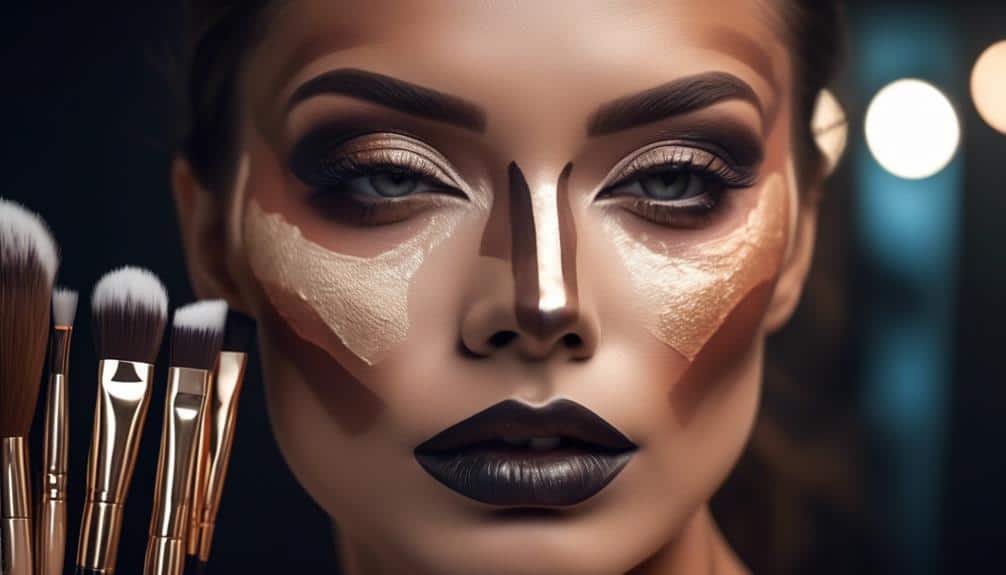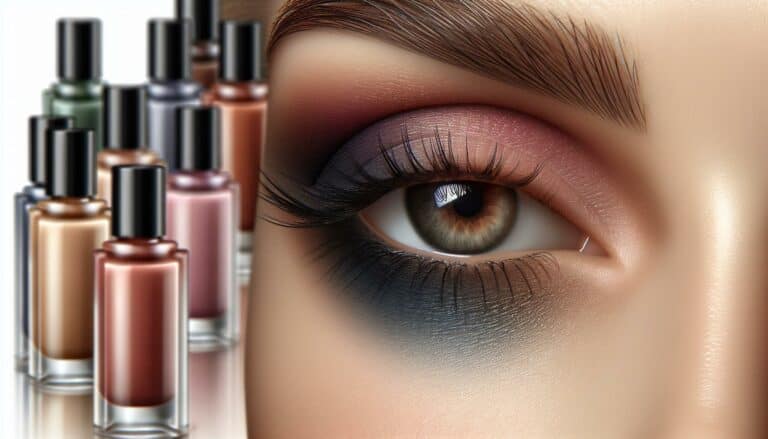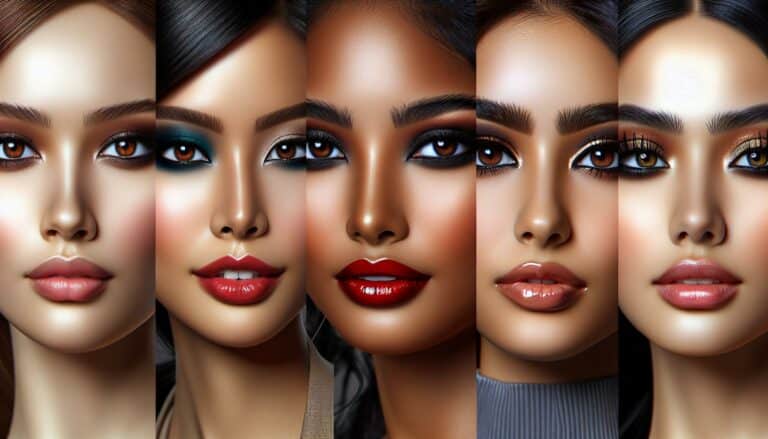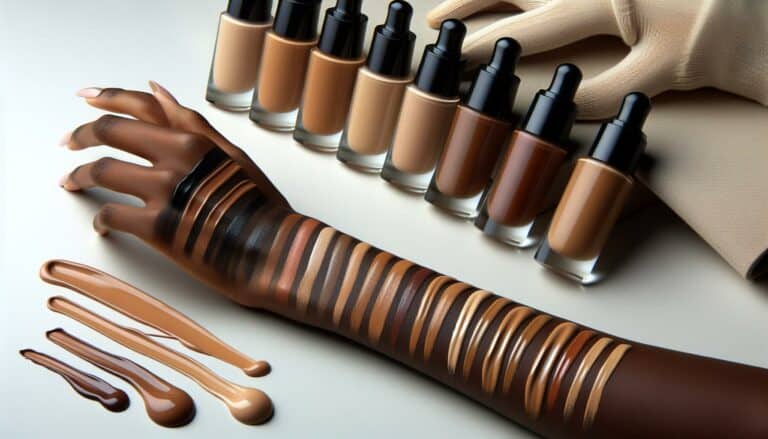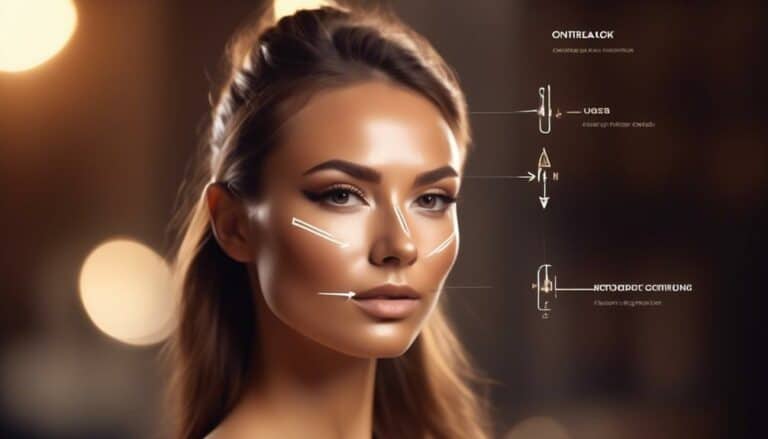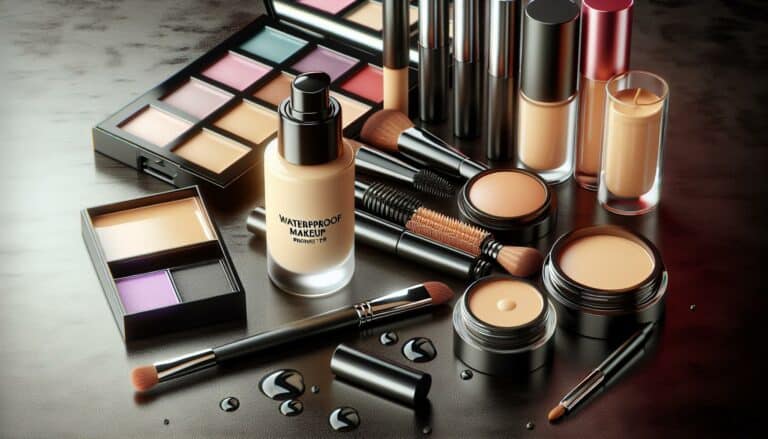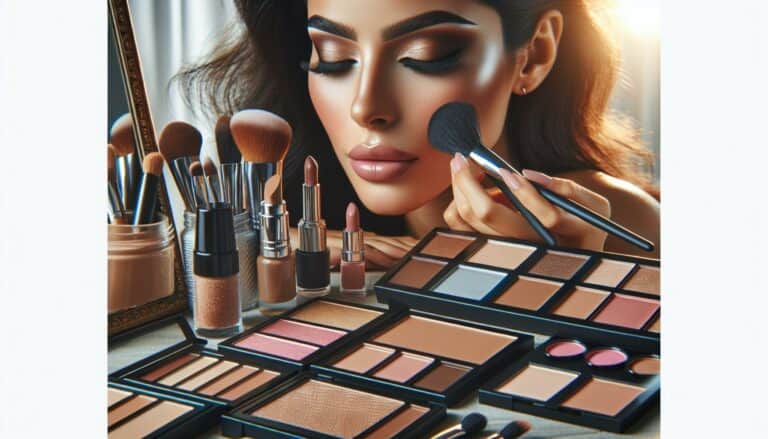How to Contour Makeup
Contouring can seem like an intimidating art form reserved for the experts, yet it's surprisingly accessible with the right guidance. You've probably admired the dramatic transformations it can provide, sculpting faces to perfection, but felt unsure about where to start.
The secret lies in understanding the basics, selecting the appropriate products for your skin tone, and mastering the techniques of shading and highlighting to define your features. As you embark on this journey, you'll discover how to map your face for contouring, ensuring every stroke of your brush enhances your natural beauty.
The art of blending is crucial, as it can make or break your look, and knowing how to set your contour will ensure it lasts all day. By following these steps, you'll unlock the power to not only transform your appearance but also boost your confidence.
Stick around to uncover how simple it can be to achieve that coveted, sculpted look with ease.
Key Takeaways
- Contouring is a makeup technique that uses shadows and light to enhance or reshape facial features.
- Choosing the right products, such as powders, creams, or liquids, is important for achieving a seamless blend of shadow and light.
- Mapping your face based on your face shape helps determine which areas to highlight and contour.
- Blending is crucial for a natural-looking contour, and the right brush and gentle circular motions are key to achieving this.
Understanding Contouring Basics
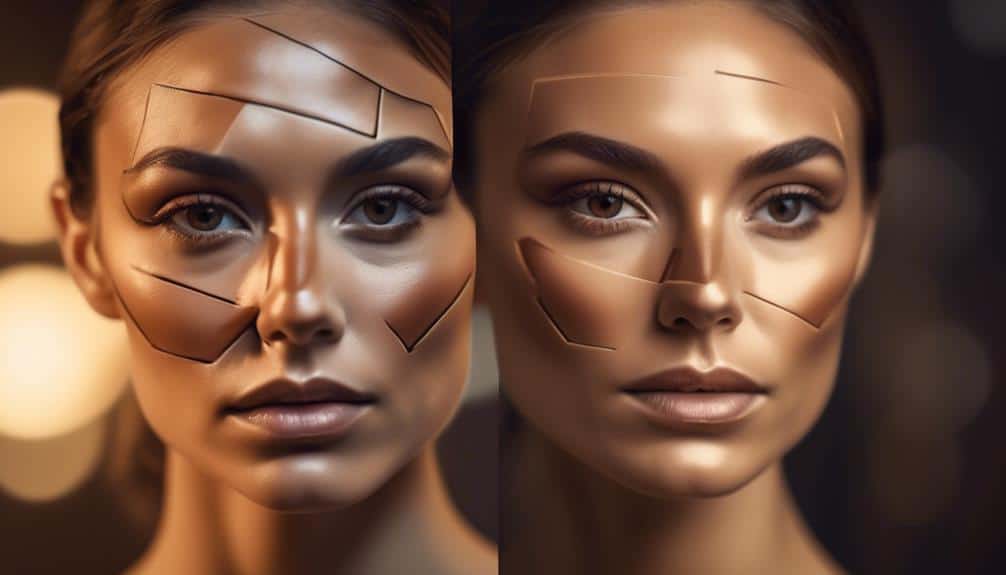
At its core, contouring is a makeup technique that uses shadows and light to enhance or reshape the appearance of your facial features. It's a method that's been around for centuries, evolving over time. You're stepping into a rich contouring history every time you pick up that brush, blending tradition with modern aesthetics. It's not just about following a trend; it's about connecting with a lineage of beauty enthusiasts who've shaped their identities through makeup.
Understanding the basics of contouring also means getting familiar with color theory. You're playing with contrasts and harmonies on your canvas — your face. By using shades darker than your skin tone, you carve out depth and dimension, mimicking the natural shadows of your features. Lighter shades, on the other hand, bring areas forward, highlighting the spots where light naturally hits. It's this interplay of shadow and light, grounded in color theory, that lets you sculpt, define, and celebrate your features in a way that feels true to you.
You're not just applying makeup; you're expressing a part of who you are, finding your place in the vast world of beauty.
Choosing Your Contouring Products
Diving into the world of contouring, selecting the right products is crucial for achieving that perfect blend of shadow and light. You're not just picking up any makeup; you're choosing tools that will help you sculpt and define your features like a pro. It's about finding what works for you, making you feel part of a community that values self-expression through makeup.
When it comes to product types, you've got options. Powders are great for beginners, offering a more forgiving application, while creams provide a richer pigment and blend seamlessly for a more dramatic effect. Liquid contours, on the other hand, offer precision and are perfect for those looking to achieve a more defined look.
Your skin tone plays a pivotal role in your choice. For fair skin, opt for cooler, lighter shades to avoid looking muddy. Medium skin tones can go a bit darker, embracing warmer shades for a natural shadow. Dark skin tones have the liberty to explore deeper, richer contours that really pop against their complexion.
Mapping Your Face
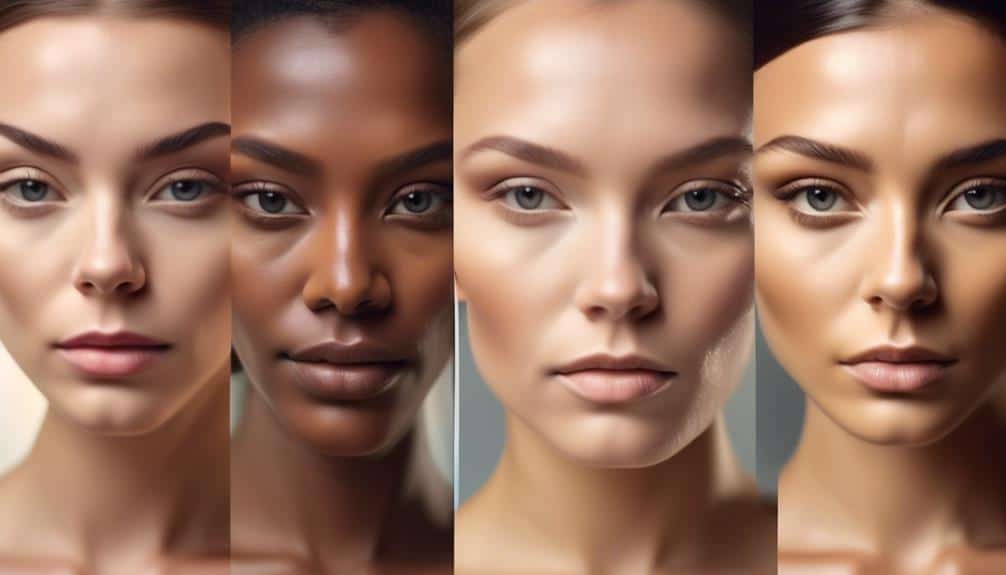
Once you've chosen your contouring products, it's crucial to understand how to map your face to enhance your natural features effectively. Knowing your face shape is the first step to identifying which areas to highlight and contour. This approach ensures you're not just following a one-size-fits-all method but rather tailoring the technique to celebrate your unique beauty.
Here's a simple table to guide you through the basics of face mapping according to different face shapes:
| Face Shape | Highlight Areas | Contour Areas |
|---|---|---|
| Oval | Forehead, chin | Cheekbones |
| Round | Under eyes, chin | Jawline, temples |
| Square | Under eyes | Jawline, temples |
| Heart | Cheeks, forehead | Outer forehead, chin |
The Art of Blending
After mapping your face according to its shape, mastering the art of blending is crucial for achieving a seamless contour makeup look. You're not just applying makeup; you're sculpting your features to highlight your natural beauty. The right brush selection is key. Opt for a fluffy, angled brush for contouring and a tapered brush for highlighting. These tools help you blend with precision, ensuring that there are no harsh lines or noticeable transitions between your contour and your skin.
Remember, blending is your secret weapon. Use gentle, circular motions to diffuse the contour shades into your foundation, creating a natural shadow effect that enhances your bone structure. When it comes to highlighting techniques, less is more. Apply highlighter to the high points of your face, like your cheekbones and the bridge of your nose, and blend softly. This adds a subtle glow that makes your skin look radiant and healthy.
You're part of a community that values beauty as an art form. By mastering these techniques, you're not just wearing makeup; you're expressing yourself and showcasing your individuality. Blending is the brushstroke in your artwork, the final touch that brings your vision to life.
Setting Your Contour
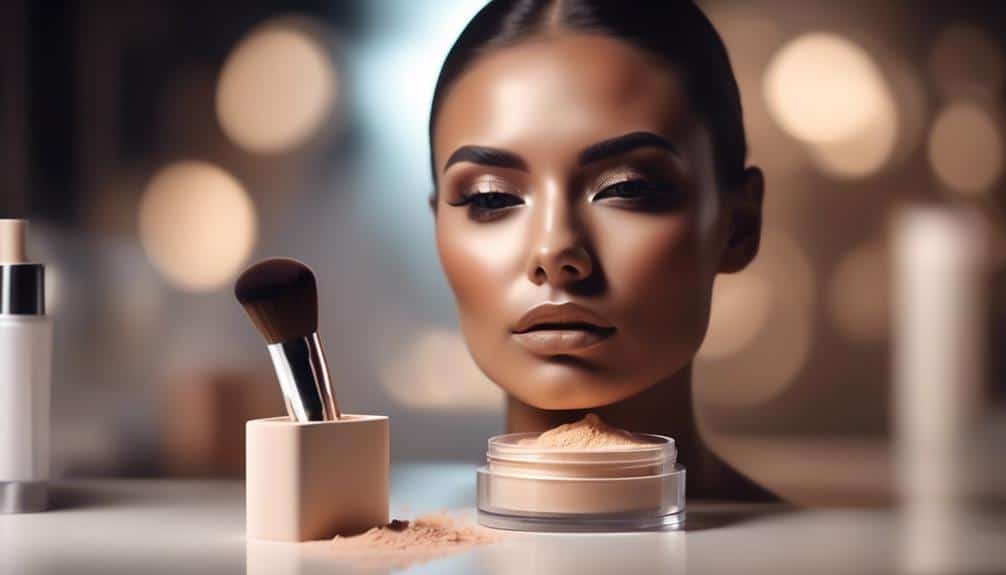
To ensure your contour makeup stays flawless all day, you'll need to set it properly with a setting powder or spray. This step is key to achieving contour longevity, ensuring that your makeup doesn't shift or fade. Whether you're aiming for a bold or a subtle look, setting your contour helps maintain the definition and highlight placement you've worked hard to achieve.
Here's a simple table to guide you in choosing the right setting product:
| Product Type | Best For | Tips |
|---|---|---|
| Setting Powder | Oily/Combination Skin | Apply with a fluffy brush to avoid moving your contour. |
| Setting Spray | All Skin Types | Mist lightly to avoid disrupting makeup. |
| Translucent Powder | Subtle Contour | Dust lightly over highlight areas for a natural finish. |
Conclusion
You've mastered the basics of contouring, chosen your products, mapped your face, blended to perfection, and set your makeup for long-lasting definition.
Remember, contouring isn't just a trend—it's an art form that enhances your natural beauty. Interestingly, a survey revealed that 68% of makeup enthusiasts believe contouring boosts their confidence.
So, embrace this technique. With practice, you'll not only look radiant but feel more confident. Keep experimenting, and let your inner artist shine through your makeup.

